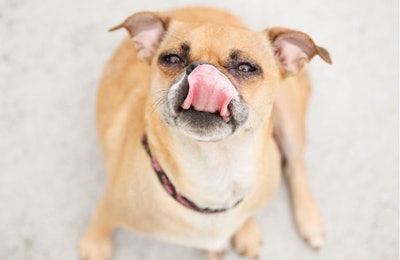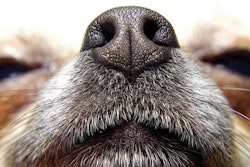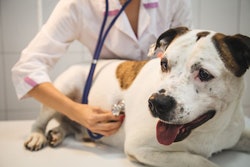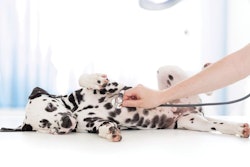
October 10 was National Pet Obesity Awareness Day in the United States, and the Association for Pet Obesity Prevention (APOP) urged veterinarians and pet owners to participate in the 11th Annual National Pet Obesity Awareness Day Survey. The pet obesity survey will remain open for the rest of the month.
For veterinarians, the pet obesity survey involves recording simple information for each pet that they perform a routine examination on that day. How many pets and the detail of information obtained is up to the veterinarian. More is better but the goal is to determine as accurately as possible the number of pets in the United States that are overweight or obese. Experience demonstrates that this should add no more than one to two minutes to a normal physical examination routine, according to APOP.
U.S. dog, cat obesity rose in 2017
Earlier in 2018, the results of APOP’s annual survey provided evidence that pet obesity in the U.S. increased in 2017, affecting 60 percent of cats and 56 percent of dogs.
APOP’s tenth annual survey examined pet owners’ and veterinary professionals’ views on pet food issues such as whether or not pet food has improved, and the best sources of pet dietary recommendations.
When asked if they believed “commercial pet food is better or worse than ten years ago,” a decade after the 2007 melamine pet food recalls, 63 percent of pet owners and 76 percent of veterinary professionals reported pet food in 2017 was “better.”
“The number of pets with clinical obesity continues to increase,” said APOP founder Ernie Ward, DVM, in a press release. “We’re continuing to see more pets diagnosed with obesity rather than overweight. Clinical obesity results in more secondary conditions such as arthritis, high blood pressure, kidney disease, and certain forms of cancer. Pets with obesity also have reduced quality of life and shorter life expectancy.”
In the October 2017 clinical survey, 56 percent of dogs and 60 percent of cats were classified as overweight (body condition score (BCS) 6-7) or obese (BCS 8-9) by their veterinary healthcare professional. These results indicate an estimated 50.2 million dogs and 56.5 million cats are above healthy weight, based on 2017 pet population projections provided by the American Pet Products Association (APPA).
In 2016, APOP found 54 percent of dogs and 59 percent of cats were overweight or obese in the U.S.

















